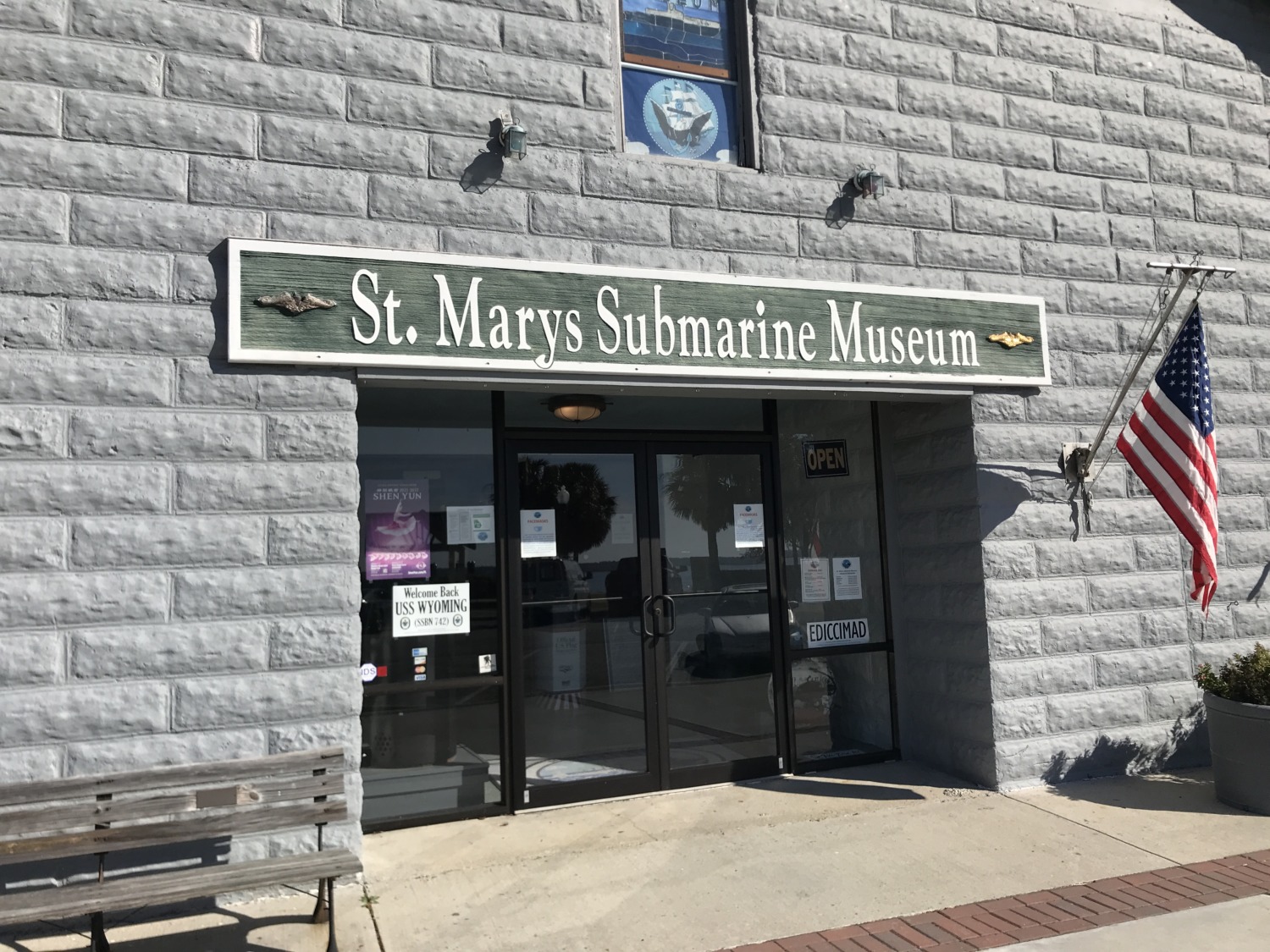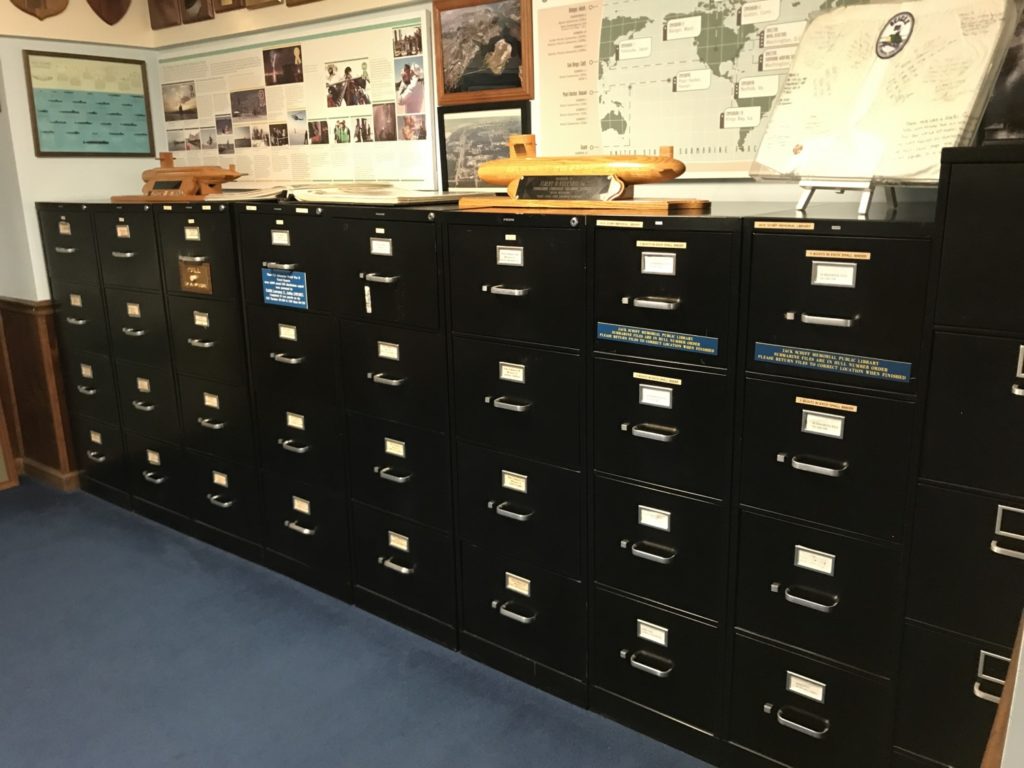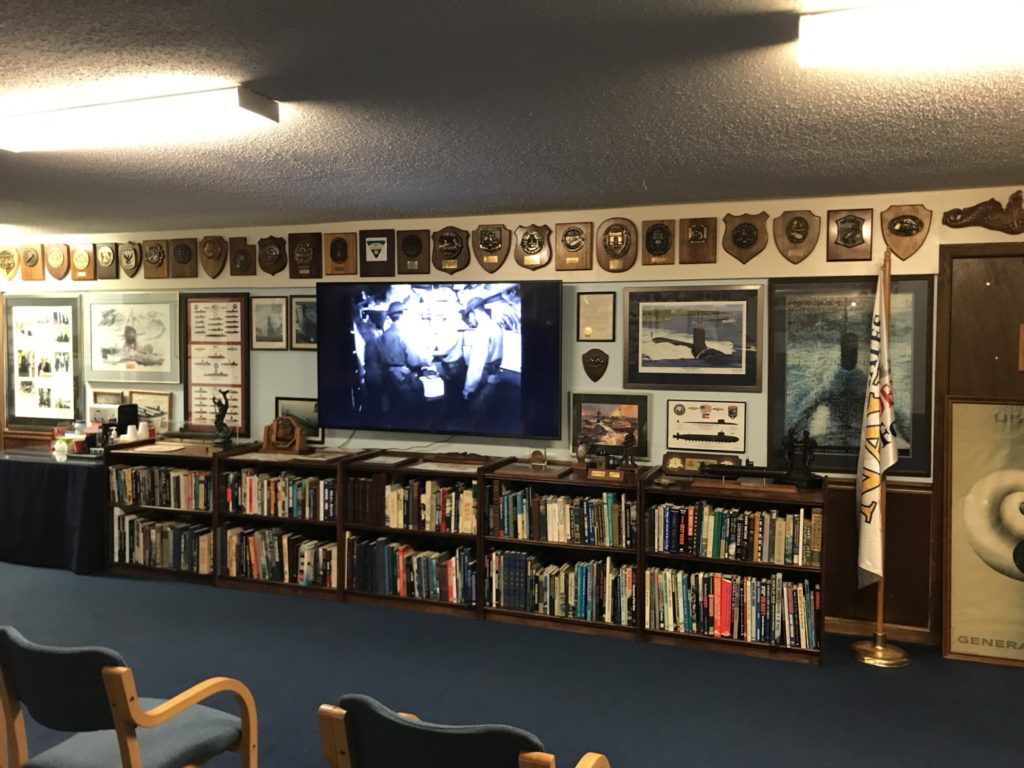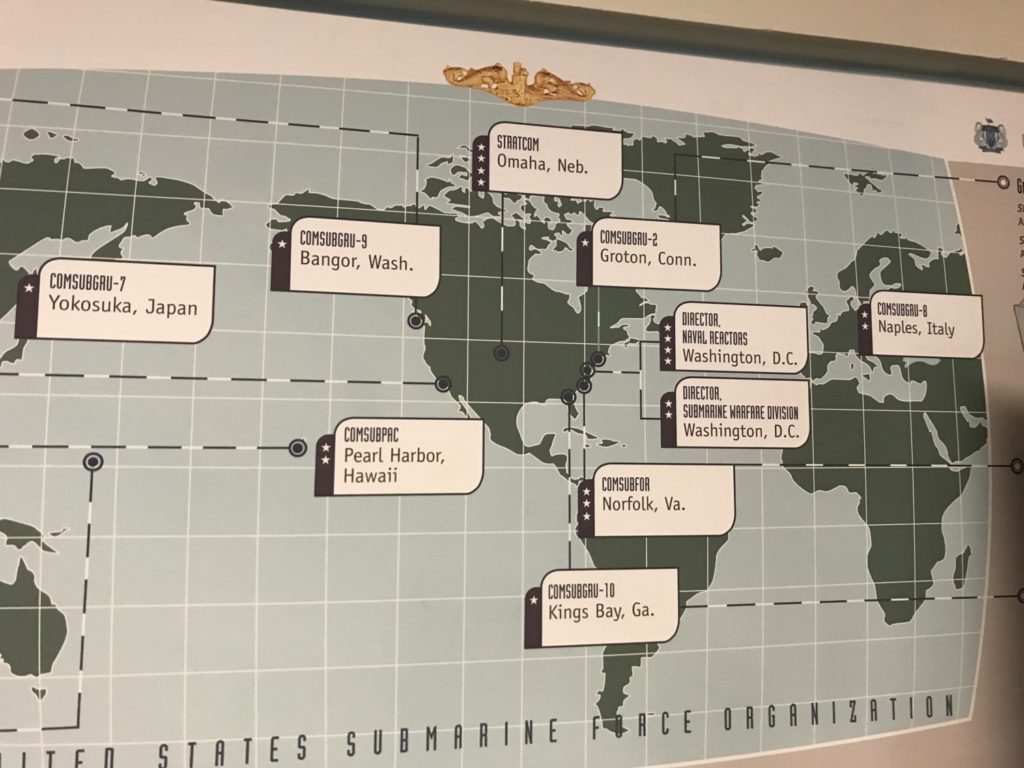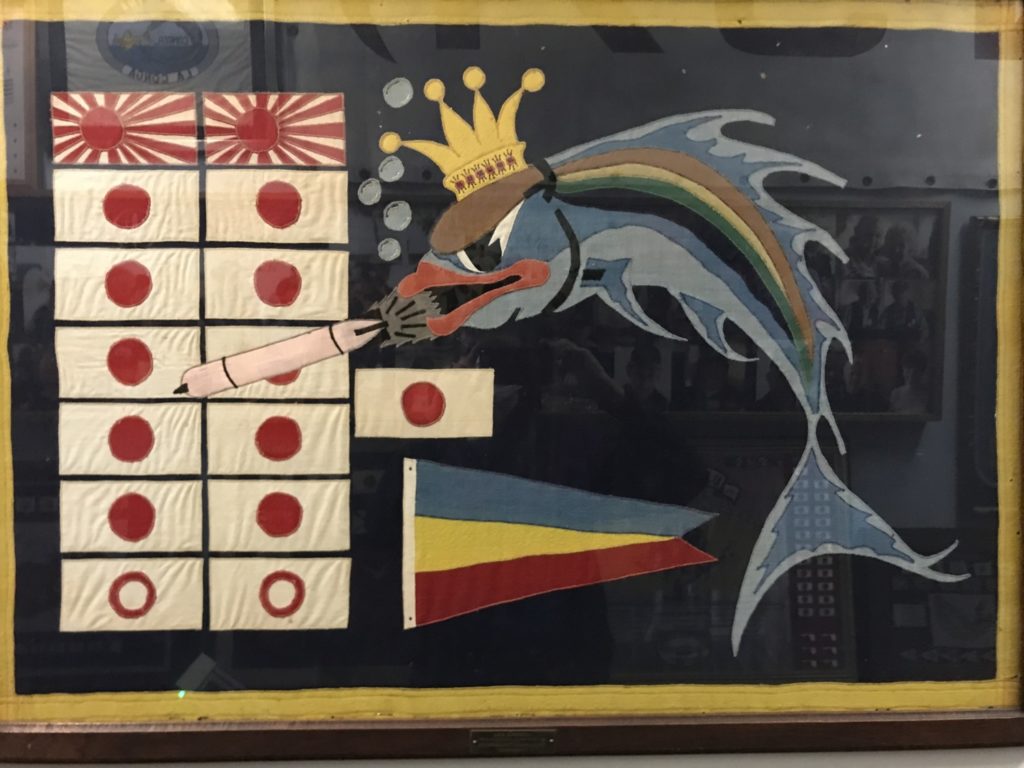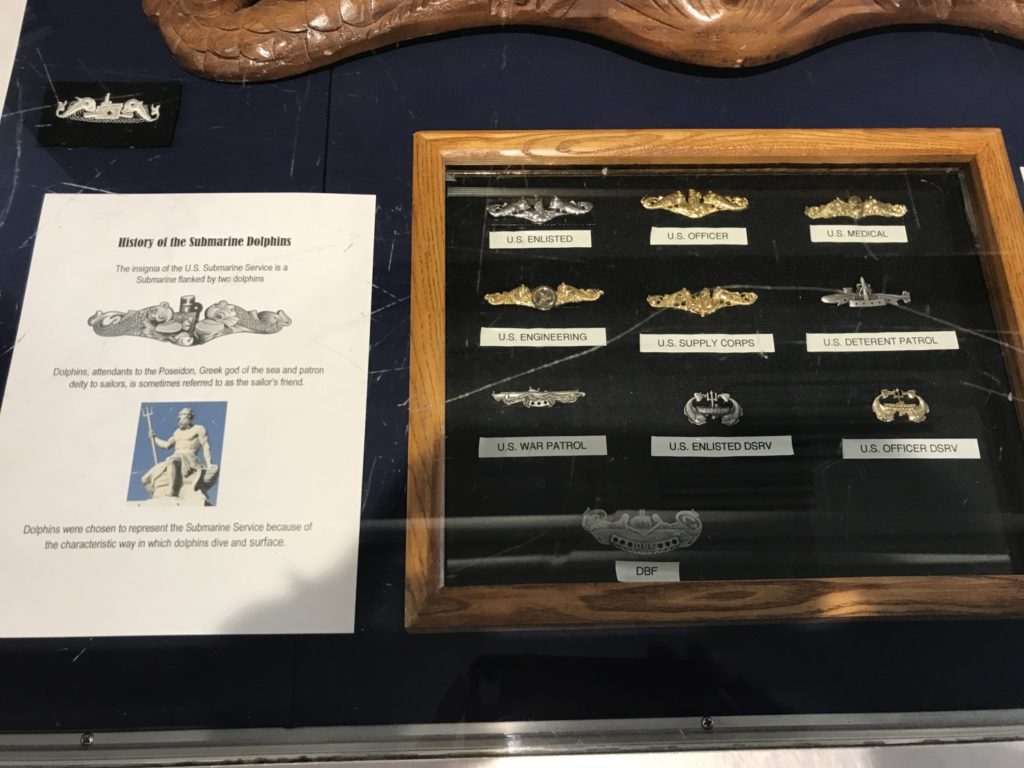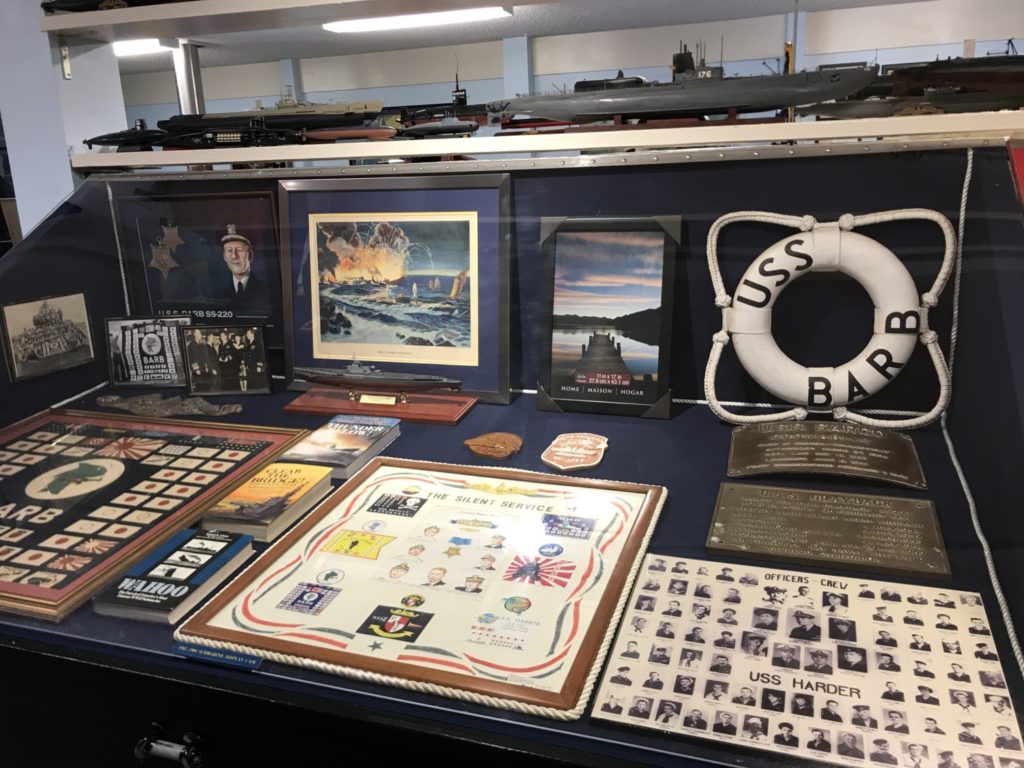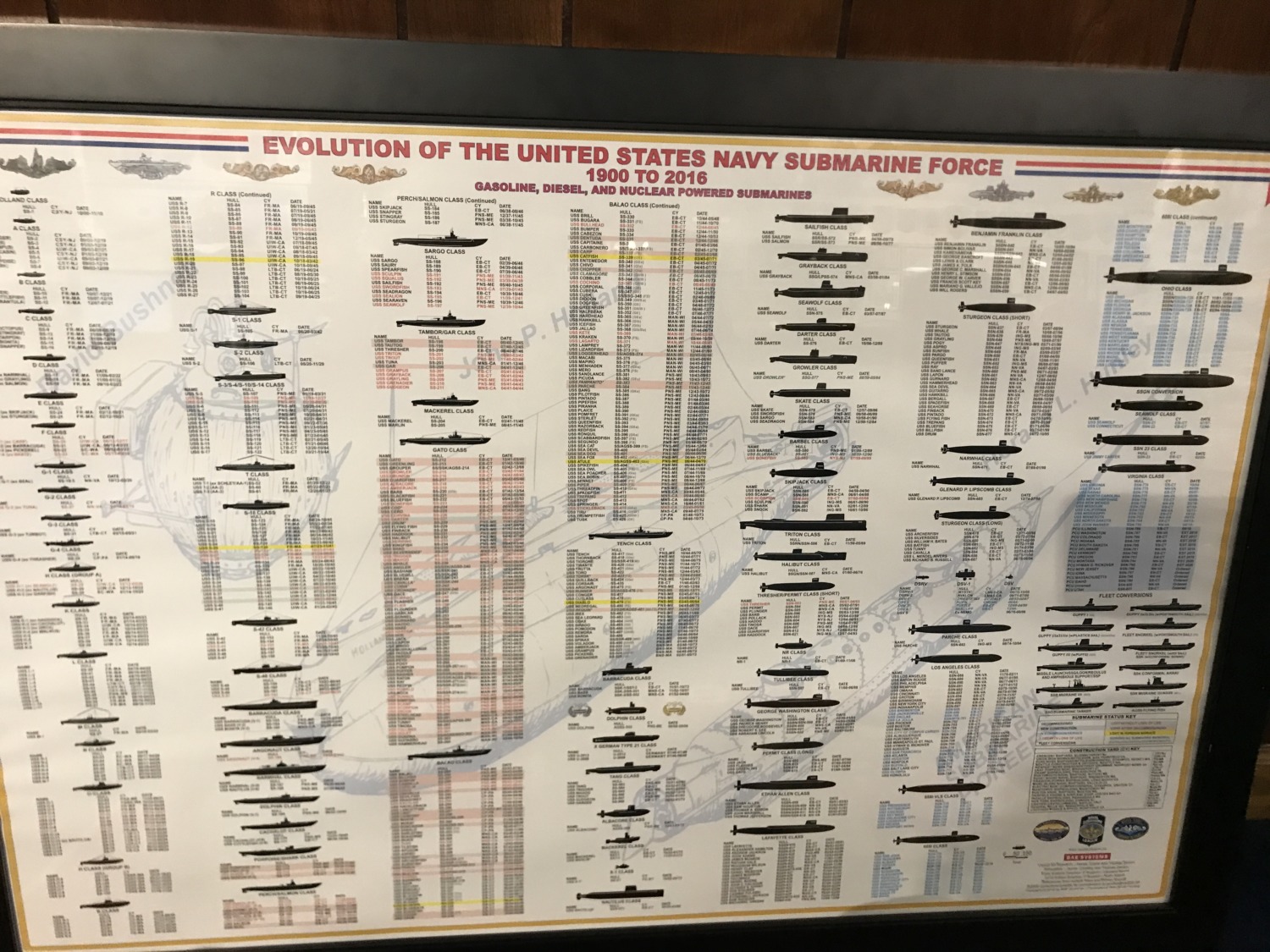Last week on our adventure day, Tom and I headed to the St Marys Submarine Museum in St Marys, Georgia. The Kings Bay Naval Submarine Base is located in St Marys, so it seems like the perfect place for a museum. Tom and I have seen just about every submarine movie ever made, so this seemed like a good fit for our interests.
Despite watching all those movies, I can’t say I really know much about submarines or their history. After visiting the St Marys Submarine Museum I know a little more about the history. Although the museum doesn’t have a timeline of submarine development, one case did mention several different early submarines.
Submarines have a long history in the United States, beginning with the Turtle, during the American Revolution. The Turtle fulfilled the four basic requirements of a submarine: the ability to submerge; the ability to maneuver under water; the ability to maintain an adequate air supply to support the operator of the craft; and the ability to carry out effective offensive operations against an enemy surface vessel. It was basically a wooden ball, designed to break the British blockade of Boston Harbor. The Turtle was not successful.
The first submarine to sink a vessel was the Confederate Hunley, which sunk the Housatonic in 1864. It held nine crewmen who propelled the submarine by hand cranking a single screw. The Hunley sank three times, and was resurrected three times, before it sank the Housatonic. Shortly after that it sank for a fourth time.
The U.S. Navy officially joined the undersea world when it purchased USS Holland in 1900. The boat, designed by John P. Holland, proved valuable for experimental purposes during her 10-year career. The Holland was never used for combat purposes but spent its life in Annapolis being used to train naval officers.
Although submarines did not play a large part for the U.S. during World War I, there were submarines patrolling European shipping lanes. USS K-5, one of the first U.S. diesel-electric submarines, deployed to the Azores patrolling for German submarines.
World War II was when the submarine force became the workhorse of the U.S. Navy. U.S. submarines accounted for 55% of all Japanese vessel losses during the war. During the World War II, 52 submarines were destroyed. More than 3,500 men serving aboard submarines died.
The USS Nautilus, developed by Hyman G. Rickover, was the first nuclear-powered submarine, and the first submarine to cross the North Pole under the Arctic polar ice pack. USS George Washington made history in 1960, when she successfully launched the first Polaris missile from a submerged submarine. The Tomahawk land-attack missile was later developed, and was first used by, submarines in combat during Operation Desert Storm.
That is a short history of the submarine that you can learn from the St Marys Submarine Museum. The museum also has hundreds of photographs, plaques, paintings, artifacts, and various equipment pieces. The museum’s collection of items and displays made me think of a small, local museum that accepts memorabilia from many veterans. There were hundreds of model submarines but none of them had a scale, so the largest submarines could look smaller than their much earlier predecessors.
There were several things that impressed me about the museum. First, they had a working periscope. I sat in the swivel chair in front of it and enjoyed a 360 view of the area outside the museum. That was fun! Second, they had an impressive research library in hundreds of paper files. I read notes from several researchers who had used the library at the St Marys Submarine Museum to get details right for books.
Third was this excellent chart, which gave a visual version of US submarine history. The chart was down low, so I had to sit on the floor to read it, but I spent about 30 minutes studying it. The chart was the best history lesson because I like things presented in a linear fashion. Seeing the length of service of many of the submarines was a surprise. Thirty years is not uncommon if a ship is not in battle.
There was a small admission fee for the museum, but we felt the money and time were well spent. We enjoyed our visit and I recommend the small, unassuming museum if you are ever in St Marys, Georgia.

